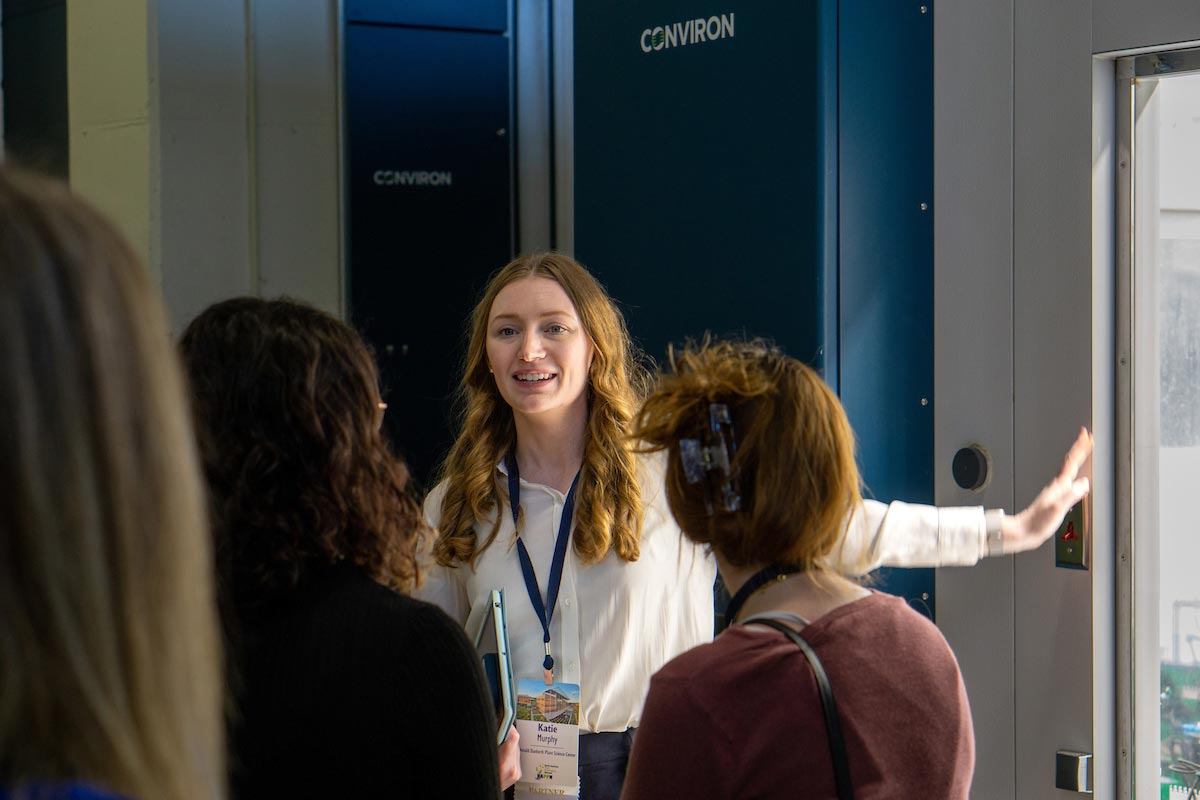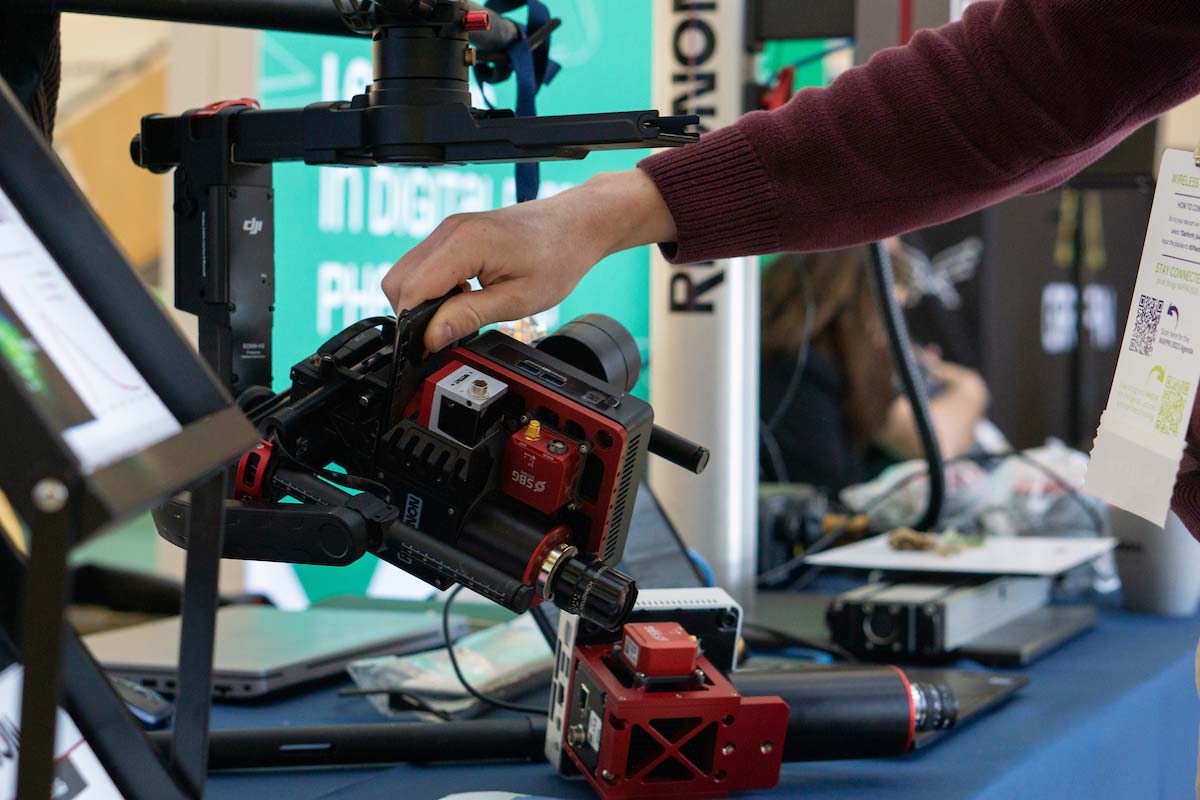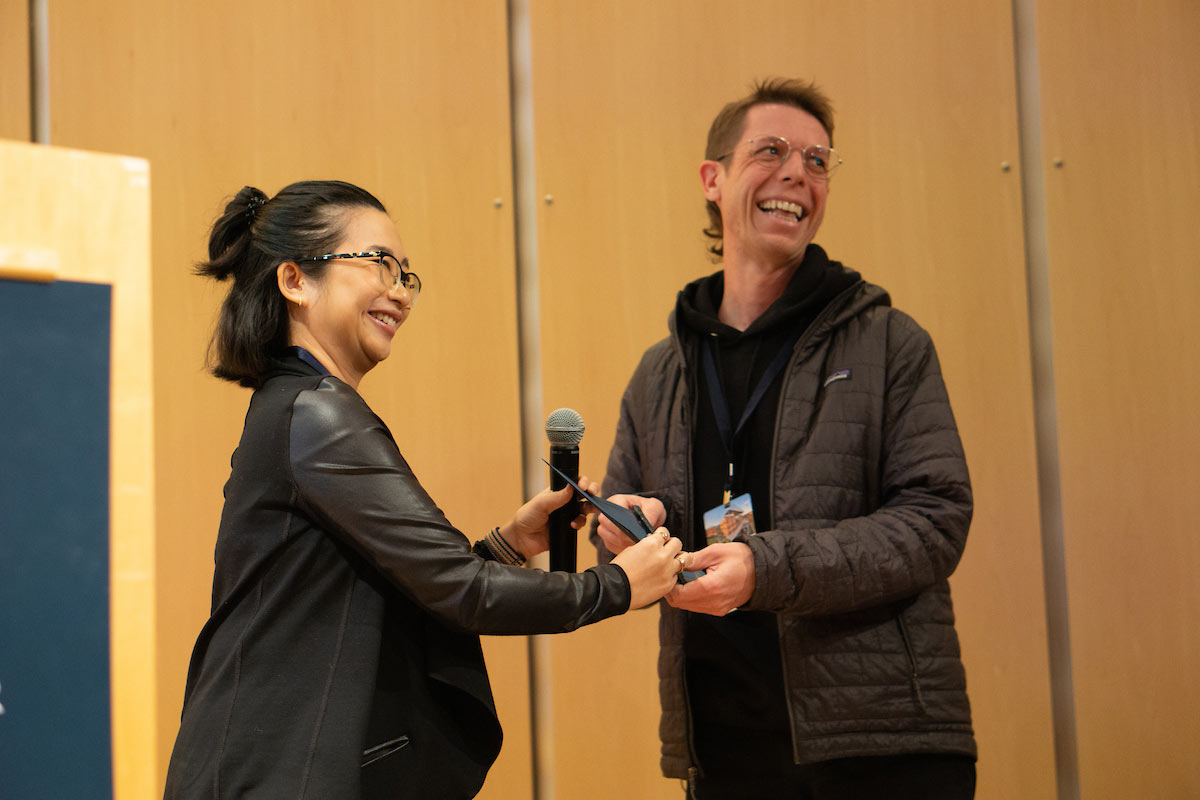Seeing is Believing: Danforth Center Hosts Major Phenotyping Conference
If a scientist were to describe the gathering that took place February 13 – 17 at the Danforth Center, they would say it was large, high-yielding, and full of life and color.
The five-day event was the third annual conference of the North American Plant Phenotyping Network (NAPPN), an association for researchers, industry leaders, and scientists of all career stages within the expanding and exciting field of plant phenomics. With hundreds of attendees from more than 15 countries, the conference was an eye-opening exploration of new ideas and provided a promising look at a better tomorrow.
Images from the 2023 phenotyping conference held at the Danforth Center.
One of the people who made the event possible was Danforth Center Principal Investigator, 2021 NAPPN Early Career Award recipient, and Chair of the NAPPN Executive Board, Malia Gehan, PhD. “It was inspiring to welcome so many remarkable colleagues to the Center for this event,” said Dr. Gehan. “The bright minds and innovations emerging from the plant phenotyping field will play a major role in solving some of our world’s most urgent problems.”
Watch and Learn
“Phenotyping is all about measuring plant traits, said Katie Murphy, PhD, Danforth Center principal investigator and director of phenotyping. “What does this plant look like? How tall is it? How green is it? How deep do its roots grow?”
Answering questions like these is essential in the effort to develop stronger and healthier plants to feed and fuel the world sustainably. However, until recently, phenotyping was a slow and labor-intensive process involving individual observation and documentation and took many human hours to collect and process data. But with the advent of robotic and other sensing technologies, phenotyping has been catapulted into the realm of actionable Big Data.
“Instead of manually watering plants every day, we use robotics and a controlled environment to allow the precise, automated weighing and watering of plants,” Dr. Murphy said. “We then take photos of the plants using different types of cameras and analyze those images using machine learning – this is a lot faster than using a ruler every day to manually measure our plants!”
Today, the Danforth Center is home to some of the most advanced phenotyping technology and Big Data algorithm and software development resources in the world. And during the conference, attendees were invited to experience those resources up-close, as well as network and learn from each other’s research.

Danforth Center Principal Investigator Katie Murphy, PhD, giving a tour of the Center’s Plant Growth Facility at the 2023 NAPPN conference. As the Center’s Director of Phenotyping, Dr. Murphy oversees the Center’s cutting-edge plant imaging technology and resources which speed scientists in their critical research and enable them to make groundbreaking discoveries.
Phenotyping is important because you can't solve anything without diagnosing the problem first.
Grace Tan,
NAPPN Conference Attendee and Speaker,
Graduate Student, University of Illinois Urbana-Champaign
Through(put) the Looking Glass
All throughout the event, innovation was everywhere. From the vendor booths in the McDonnell Atrium showcasing the latest and greatest plant imaging tools, to the poster displays outside the AT&T Auditorium. Here, researchers had the opportunity to put their discoveries on display, tell the story of their work, and discuss its potential to change the world for the better.

Some of the state-of-the-art imaging equipment on display at third annual NAPPN conference. The event, hosted by the Danforth Center, included vendor booths representing some of the largest and most innovative phenotyping organizations in the world.
One of these researchers was Terence Seldon Kwafo, a graduate student at the University of Illinois at Urbana-Champaign. His poster detailed his project that resulted in the development of a new, rapid, nondestructive technique to measure nutrient concentration in plants and soil. At the end of the week, Terence won the conference’s People’s Choice Poster Presentation Award.
“I've had a lot of interest in the Danforth Center for a very long time,” Kwafo said. “They are at the front row of doing these kinds of innovations.”

Terence Seldon Kwafo, who won the People’s Choice Poster Presentation Award at the conference, appreciates the diversity of thought within the plant phenotyping space. “Bringing people from different expertise to solve one problem—that's what excites me about the field,” Kwafo said.
New Perspectives
Along with seminars, presentations, and panel discussions, the event boasted many fun and unique ways for attendees to get involved and engaged. These included hands-on workshops, field trips around 39 North, and tours of the Center’s campus. But for many guests, the highlight of the conference was having the chance to connect and build relationships with other individuals who shared their drive to discover. “Often, the people working in the same field, we have the same language to talk,” said Kaining Zhou from Ningxia, China, whose attendance at the conference marked her first visit to the United States. “So, it's a great opportunity to meet up.”
The Danforth Center itself also forged new bonds. The NAPPN is only one of several regional partners of the International Plant Phenotyping Network (IPPN), a larger association of the world’s leading phenotyping institutions. Mid-way through the conference, during the IPPN’s general assembly meeting, the Danforth Center officially became a member organization of the group.
Joining the IPPN is important to contributing to the global research community, where together we can tackle the biggest problems in advancing technologies and analytics for growing better crops.
Katie Murphy, PhD,
Principal Investigator and Director of Phenotyping

Danforth Center Principal Investigator Malia Gehan, PhD, handing the People’s Choice Fast Forward Talk Award to Cedar Warman, who gave a brief presentation about a rapid and large-scale phenotyping system to characterize heat stress response in flowering plants.
Why it Matters
Science to address challenges at the nexus of agriculture and the environment has never been more important. Danforth Center scientists are speeding plant science solutions to market to build a brighter future. Join us by supporting the Danforth Center today.